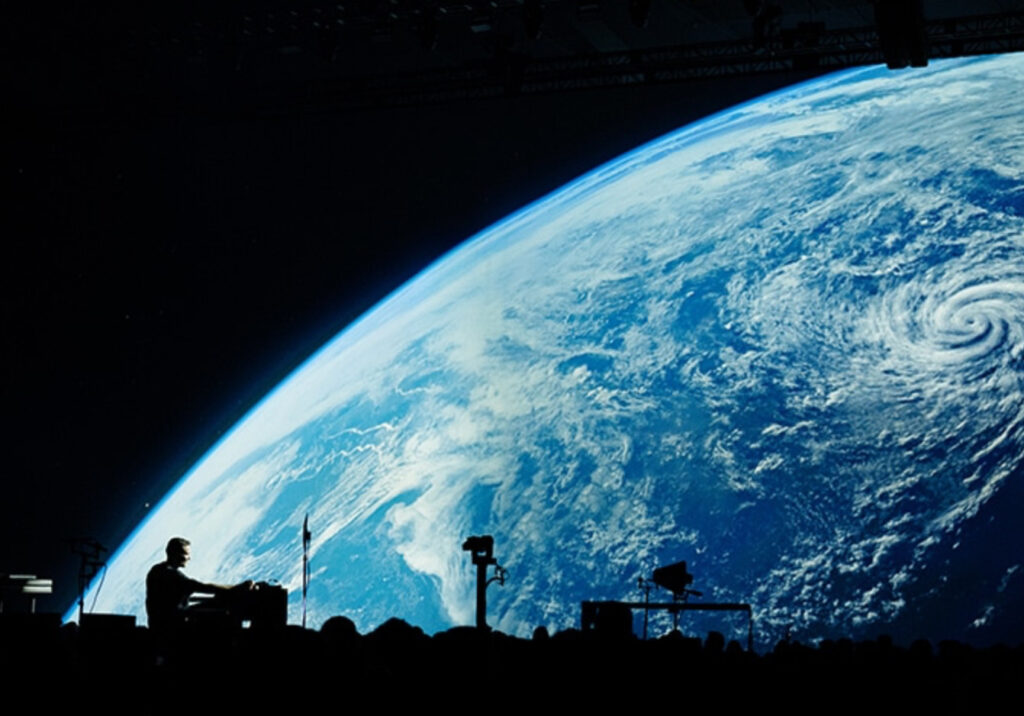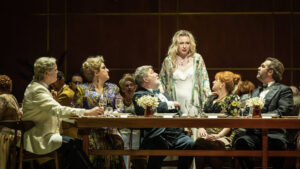As the boundaries between music, performance, and storytelling continue to dissolve, Cercle Odyssey emerges not merely as a live show, but as a cultural event designed to stretch the limits of perception. To inaugurate the summer of 2025, Cercle—the Paris-based curators of transcendental soundscapes—has launched the world’s first large-scale 360-degree nomadic concert experience, marking a radical departure from the static, stage-centered architecture of traditional festivals. Spearheaded by Founder and Creative Director Derek Barbolla, this ambitious initiative crystallizes Cercle’s decade-long commitment to elevating live music through breathtaking locations, bespoke visuals, and a meditative sense of occasion.
Over the span of three global capitals—Mexico City, Los Angeles, and Paris—Cercle Odyssey invites audiences into a liminal space where music doesn’t just echo, but envelops; where the venue is not simply a site, but a narrative portal. Two performances per day. Five days per city. Ten unique sonic voyages, each meticulously co-conceived by Cercle and its performers. In a world saturated with music festivals, Cercle Odyssey doesn’t entertain—it enraptures.
The Philosophy of the Odyssey
To understand Cercle Odyssey is to understand Cercle’s origin myth. What began as a YouTube channel streaming DJs against the cinematic backdrops of Château de Chambord, Mont-Saint-Michel, or the Great Pyramids of Giza has evolved into a full-blown design language—where setting, camera movement, and ambient aesthetics function not as backdrop but as part of the music’s architecture.
With Cercle Odyssey, Barbolla expands this vision into a nomadic gesamtkunstwerk—a total work of art. This is not a festival in a field, nor a tour of amphitheaters. It is a roving ecosystem wherein space, story, and sound are holistically choreographed. The “360-degree” experience is literal: circular stages, surrounding visuals, and spatial audio envelop the crowd, blurring the line between performance and participation.
Each show becomes a singularity: no two nights are identical, no two cities replicate one another. And unlike pre-programmed touring sets, these concerts are co-authored with the artists, allowing them to adapt and reinterpret their work within Cercle’s immersive, high-concept infrastructure.
The Sonic Cartographers
The talent curated for Cercle Odyssey reads like a roll call of genre-defying visionaries—musicians who treat sound not just as rhythm or melody, but as sculptural material. These are artists known for commanding both silence and spectacle, for blurring the line between setlist and séance.
From modular synth pioneers and ambient maximalists to neo-classical architects and global bass visionaries, the lineup celebrates sonic plurality. While the full roster remains partly under wraps, insider reports confirm a potent blend of cinematic electronica, hybrid techno, and orchestral explorations—all delivered through live performance rather than traditional DJ sets.
What unites these artists isn’t genre, but gesture: each is a special uniqueness of crafting sound that lives in conversation with environment. In other words, artists are not chosen to headline—they are chosen to co-create.
Mexico City – Where Earth Breathes
The tour begins in Mexico City, a metropolis both ancient and infinite. Known for its volcanic geography, pre-Columbian ruins, and vibrant alt-culture scenes, the city becomes the cradle of Cercle Odyssey’s genesis.
The venue? An undisclosed location on the city’s eastern edge, rumored to be an open-air site framed by basalt rock and native flora. Here, earth-based scenography takes precedence. Projection domes mimic the folds of volcanic ash. Light behaves like rainfall. Audio emerges not from towering stacks but from embedded transducers buried in the ground.
The first two shows evoke themes of emergence and descent. Morning sessions include slow-building drones, environmental sampling, and ritualistic choreography. Evening sets, by contrast, accelerate toward euphoria—building into seismic crescendos that feel tectonic in scope.
In Mexico City, Cercle Odyssey is less a concert than a sonic excavation. The city’s ancient rhythms are reanimated, filtered through future technologies, then returned to the soil.
Los Angeles – Light as Myth
The second leg unfolds in Los Angeles, a city of illusions, refractions, and cinematic mirage. If Mexico City anchors Odyssey in the tactile, L.A. situates it in the symbolic. Performances are staged at a former aerospace facility reimagined into a kinetic sculpture park. Scenography here is deeply influenced by mid-century light art, experimental cinema, and Californian psychedelia.
During daytime shows, sunlight is captured and refracted through crystal structures suspended from rigging. Audience members are equipped with augmented reality visors that offer real-time generative visuals tailored to audio frequencies. As dusk approaches, L.A.’s desert-pink twilight becomes part of the set—the golden hour as score.
Night performances emphasize rhythmic abstraction and futuristic fables. Think metallic percussion echoing like industrial prayer, synth sequences mapping planetary orbits, dancers moving in geometric synchronicity. These aren’t concerts. They are rituals of myth-making, staged beneath the ghosts of film reels and freeway dreams.
Paris – Memory in Bloom
Finally, Cercle returns home—to Paris, the city that birthed its founding vision. But this is not the Paris of postcards. Rather than Eiffel Tower or Palais Garnier, Cercle Odyssey is staged in an abandoned greenhouse complex on the city’s outskirts—a secret garden where memory becomes flora.
Here, the experience leans into intimacy, decay, and rebirth. Projection mapping cloaks every leaf and vine in phosphorescent afterglow. Sound is subtle, almost fragile—delivered through a 64-channel ambisonic array that responds to audience movement. The music whispers, swells, recedes. There are no drops, only blooms.
It is the most emotional of the three chapters. One night might be headlined by a contemporary string ensemble improvising to generative visuals of melting icebergs. Another could feature a vocalist looping field recordings from the Seine into a lullaby about displacement. The Parisian leg of Cercle Odyssey is not about spectacle. It’s about reflection.
Beyond the Horizon – Why Cercle Odyssey Matters
In a world increasingly dominated by algorithmic suggestion, social media virality, and the mass commodification of live experiences, Cercle Odyssey insists on sacred temporality. There are no replays. No livestreams. No “just catch the next date.” Attendance requires commitment, and in return, promises presence.
It represents a renaissance of the concert—a return to the ceremonial, the singular, and the spatial. While festivals offer abundance, Cercle Odyssey offers concentration. You’re not just watching an artist perform; you’re witnessing an environment react. You’re not just hearing music; you’re inside it.
There’s something unapologetically utopian here: the belief that sound, when framed with care and intention, can transform collective consciousness. That a concert isn’t just an event, but a portal into altered awareness. That technology, when wielded artistically, can bring us closer, not further apart.
A New Cartography of Connection
Cercle Odyssey may be the most important live music project of 2025, not because of its scale, but because of its philosophy. It posits that the future of performance lies not in bigger stages or louder drops, but in deeper immersion, intentional design, and emotional resonance. In rejecting the flatness of traditional entertainment, it invites us into a spherical world—one where music is not consumed, but inhabited.
In a time when so much of culture feels fragmented, Cercle Odyssey offers a unified field of vision and sound. It is a map of what’s possible when art is allowed to breathe, unfold, and guide us—360 degrees at a time.
No comments yet.







